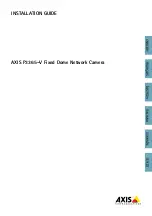
Chapter
12
. Configuring Network Address Translation
133
+
@
,
# ?#
Unlike the other NAT flavors, the Bimap flavor performs address
translations in both the outgoing and incoming directions.
In the incoming direction, when the specified Hurricane 9200/S
interface receives a packet with your public IP address as the
destination address, this address is translated to the private IP
address of a computer on your LAN. To the external computer, it
appears as if the access is being made to the public IP address,
when, in fact, it is communicating with a LAN computer.
In the outgoing direction, the private source IP address in a data
packet is translated to the LAN’s public IP address. To the rest of
the Internet, it appears as if the data packet originated from the
public IP address.
Bimap rules can be used to provide external access to a LAN
device. They do not provide the same level of security as RDR
rules, because RDR rules also reroute incoming packets based on
the port ID. Bimap rules do not account for the port number, and
therefore allow external access regardless of the destination port
type specified in the incoming packet.
Figure 55 shows the fields used to establish a Bimap rule.
Figure 55. NAT Rule – Add Page (Bimap Flavor)
Follow these instructions to add a Bimap rule (see steps 1-4 under
"The NAPT rule" on page 125 for specific instructions
corresponding to steps 1 and 2 below):
1. Display the NAT Rule – Add Page, select
BIMAP
as the
Rule Flavor, and enter a Rule ID.
2. Select the interface on which this rule will be effective.
3. In the Local Address field, type the private IP address of the
computer to which you are granting external access.
4. In the Global Address field, type the address that you want
to serve as the publicly known address for the LAN
computer.
5. Follow steps 8-11 under "The NAPT rule" on page 125 to
submit your changes.
Summary of Contents for Hurricane 9200/S
Page 1: ...ADSL Ethernet Router User s Guide Revision 1 0 ...
Page 9: ...Table of Contents 9 C Glossary 191 Index 199 ...
Page 10: ......
Page 13: ...13 Part 1 Getting Started ...
Page 47: ...47 Part 2 Interfaces and Operating Modes ...
Page 88: ......
Page 89: ...89 Part 3 Routing and IP Related Features ...
Page 102: ......
Page 115: ...115 Part 4 Security Features ...
Page 159: ...159 Part 5 Administrative Tasks and System Monitoring ...
Page 198: ......
















































